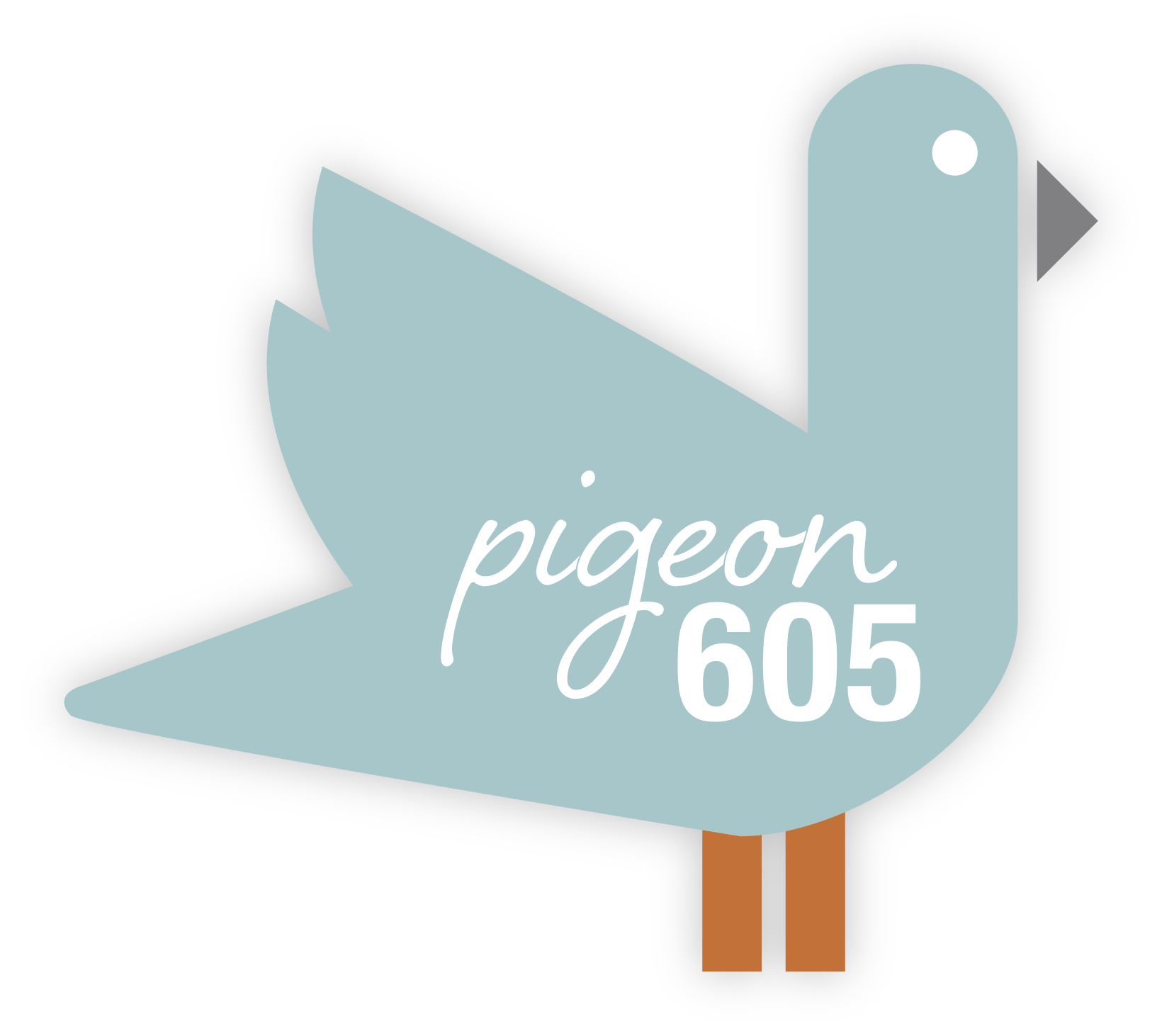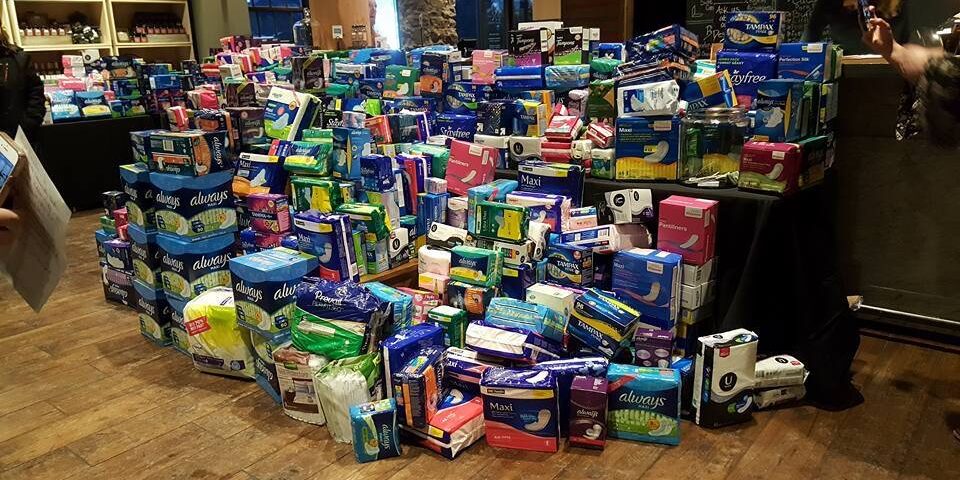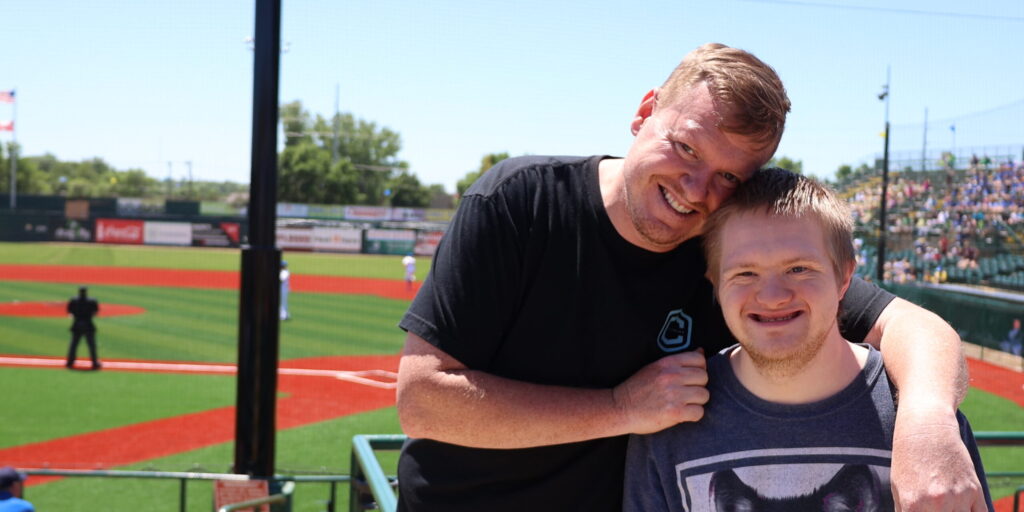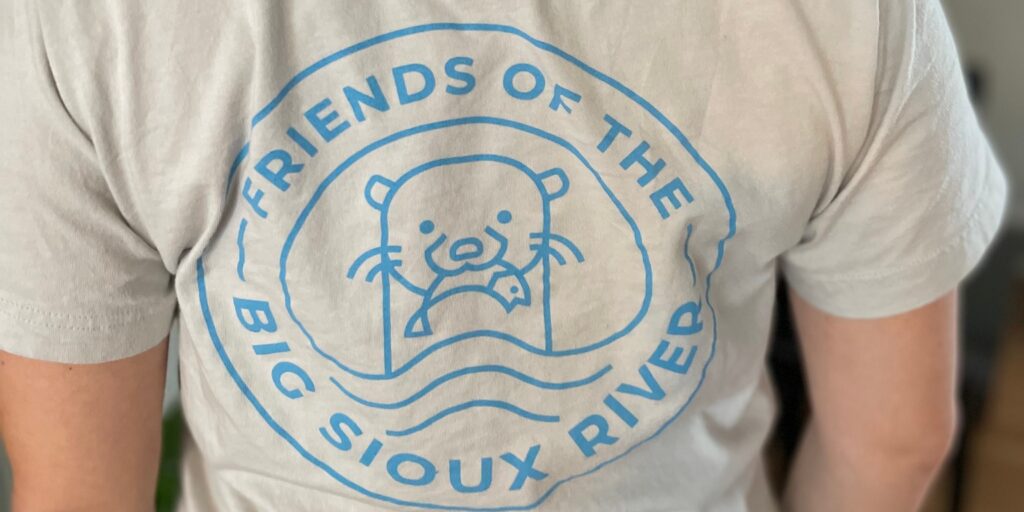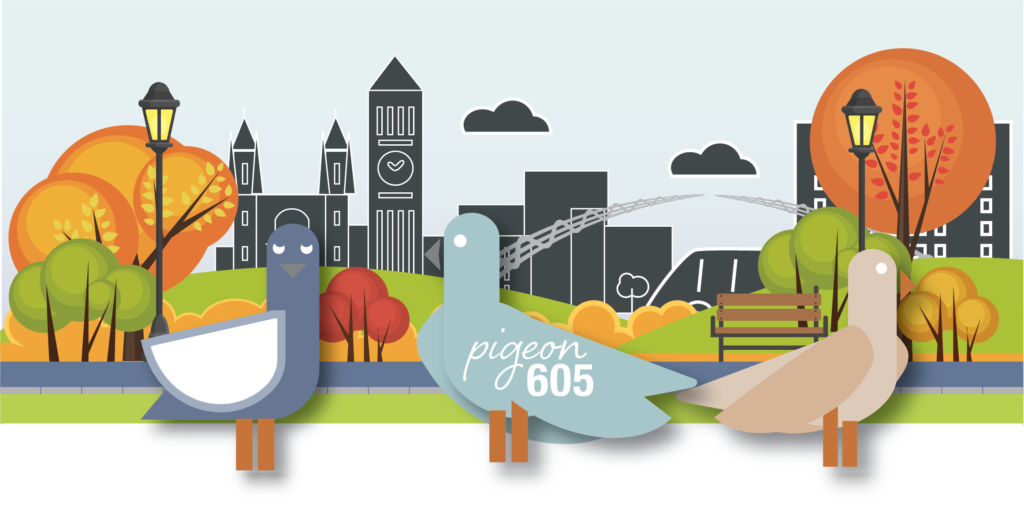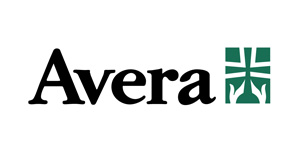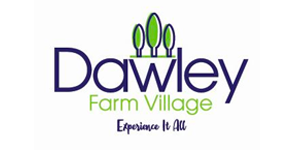Artists affected by addiction create powerful display of work
Jay Warren spends a lot of time flipping through magazines.
Old Popular Mechanics. Life. National Geographic. Wandering thrift shops looking for vintage issues and bringing them home.
Then, he looks at them, not as periodicals but as possibility, as he cuts them up and reinvents them as collage art.
It’s one way he stays sober, which he has been for more than eight months. Warren, who is from South Dakota but now lives in Red Wing, Minnesota, will show two of his collages in the Tallgrass Recovery Art Show, which is celebrating a decade of art this year.
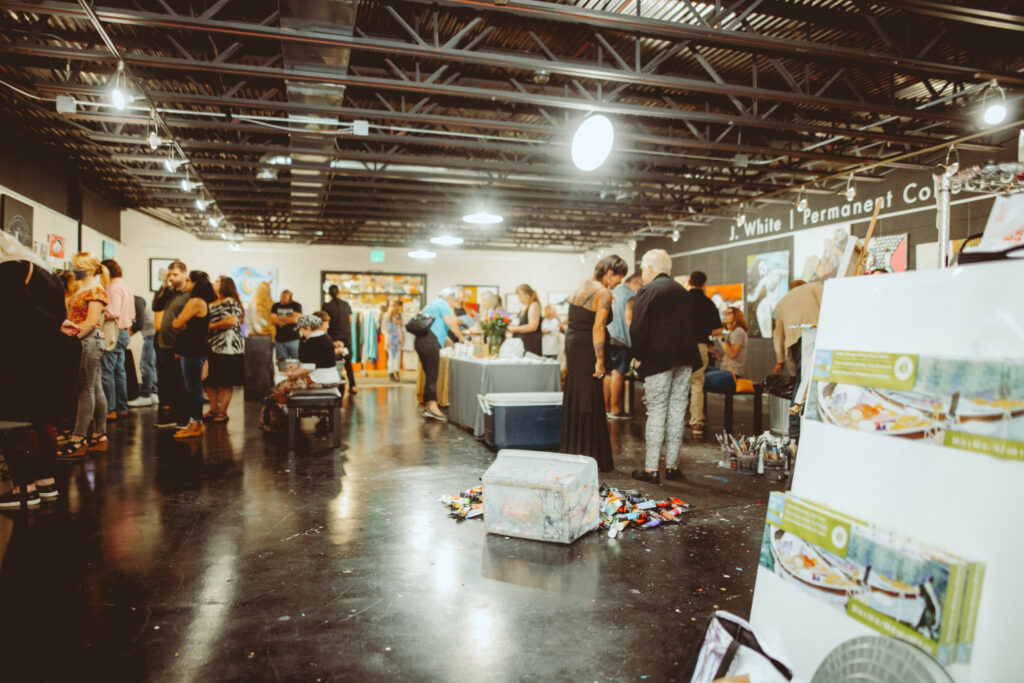
The show, Friday, Aug. 26, at the Post Pilgrim Gallery — the lower level of Last Stop CD Shop, 2121 E. 10th St. — was founded by artist Joan Zych and started as a pop-up art show in downtown Sioux Falls. “Every year, I get new and different artists and some who have been with me the whole time,” Zych said. “It’s just been very well respected by the community and the artists.”
The artists all have been affected by addiction in some way – either they suffer from the disease of addiction, have a family member who does or are in recovery. They submit their work and then write an artist’s statement, which Zych said can be scary. Warren agrees but also finds it liberating.
“People are baring their souls, and people who are in those situations have amazing stories,” Warren said. “It is amazing that people go through so much and are able to pull themselves out of addiction and save their own lives.”
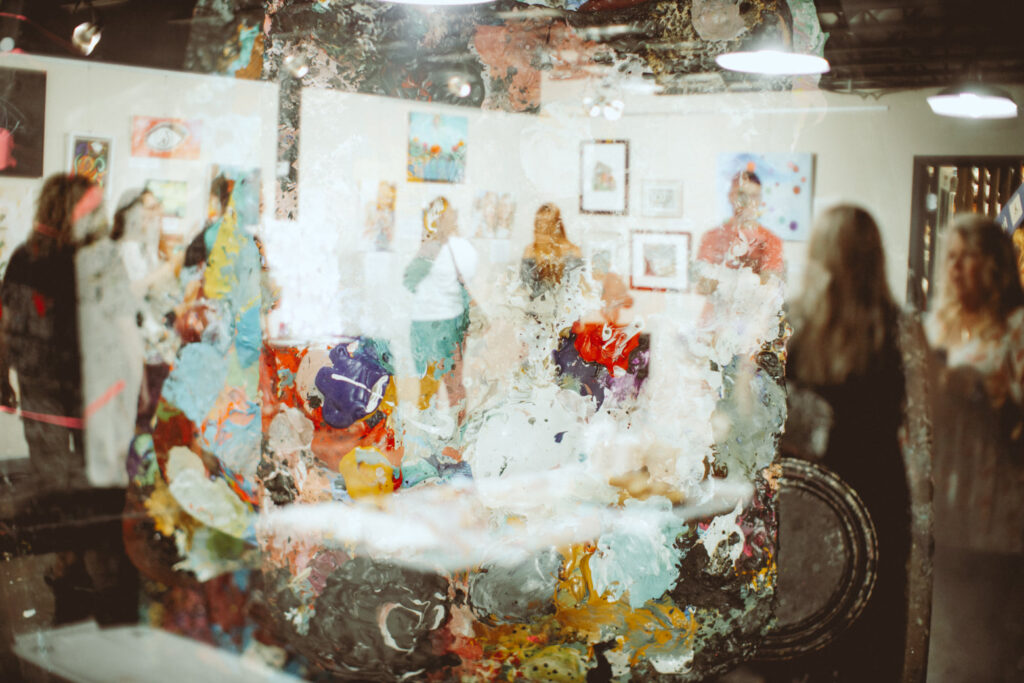
Warren, who has always been interested in telling stories through film, began telling them through collage art while in a treatment center, which he went to after a difficult period in his life. “I had to either go to treatment or the alternative is probably death,” Warren said.
The treatment center had art classes, and collage was offered.
“You only had about 45 minutes a session to get out what you wanted, but I enjoyed that process of looking for something and finding pieces to put together. It’s like remixing a song — you take samples and put them together, and now it’s something new.”
The first piece Warren will have in the show is of a gentleman who looks distressed, with gravel and crackers falling out of his mouth, and a bottle of booze in his hand, extended toward the viewer.
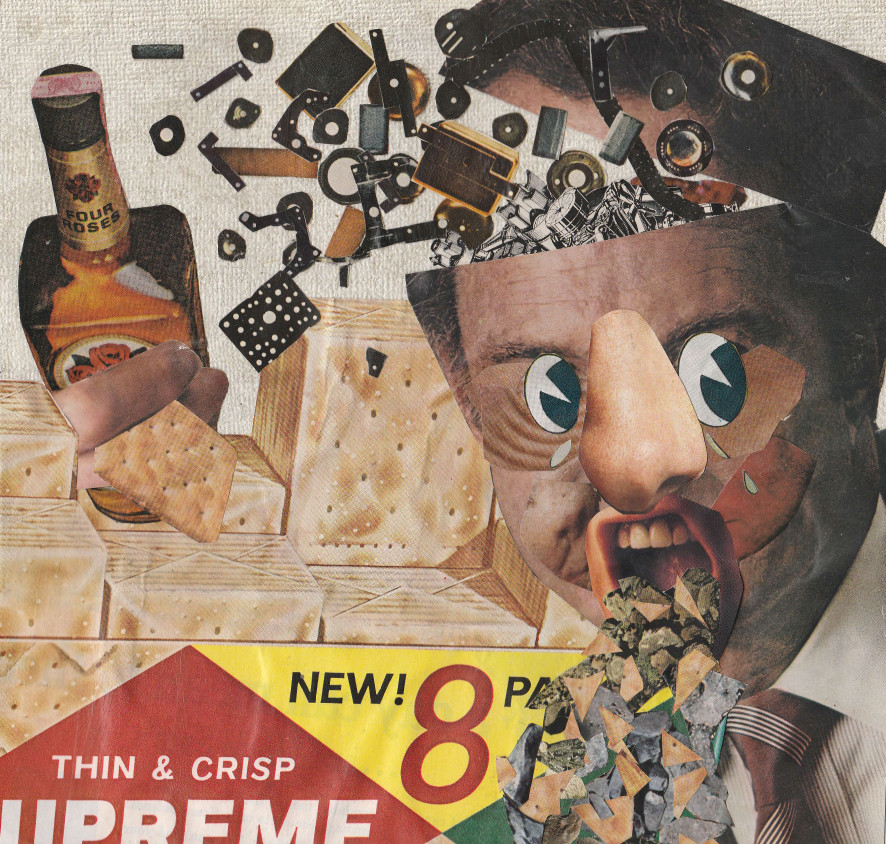
“It’s about the last days before I went to treatment,” Warren said. “Your brain is everywhere, you’re constantly drunk, you’re exhausted, you’re emotionally all over the place, and the only thing you can really eat is saltine crackers.”
The second piece shows a man sitting alone, and the windows around him are filled with bar signs and happy women and couples and arms holding out drinks. “You could read it a few ways, but you’re in a society that is constantly pressuring you to drink,” Warren said. “It’s hard to go out, so you’re kind of holed up in your place, and you do feel that way, like you can’t leave.”
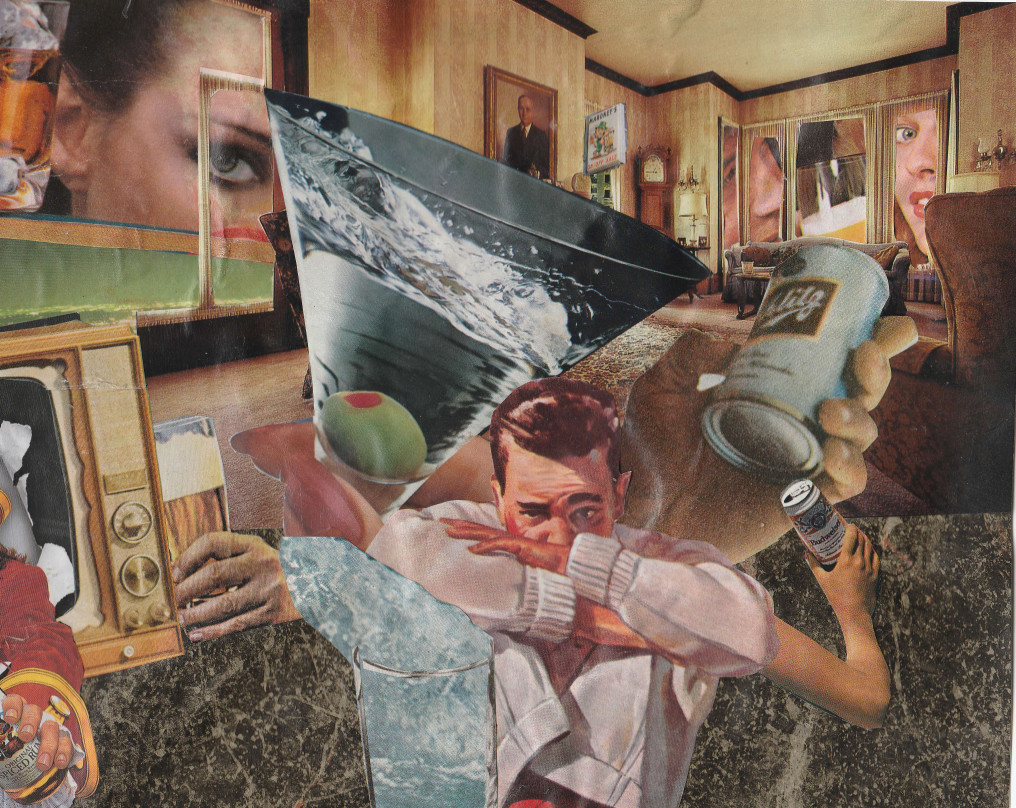
But art is always open to interpretation, and Warrens said others have seen it as someone who just stays home and wants to drink alone.
It’s particularly relevant to Warren, who said having a strict routine with collaging filling his hours after work has been paramount to his recovery. It wasn’t about only creating when he felt like it.
“There were days when I thought, ‘I don’t want to do collaging,’ but if you don’t, you go home and all you think about is drinking, but if you do this for 15 minutes, then you’re into it,” Warren said.
Zych sees her art as a way to tell her story and said the only time she really didn’t create was when she was early in her sobriety.
“Emotionally, I am connected to the pieces I create, so it helps with my mental health,” Zych said. “In general, it’s a way for me to get out emotions both good and bad. And it gives people the opportunity to know about me, as a person who is in recovery, what it was like before and where I am spiritually and mentally.”
Zych, who works at Rehfeld’s Gallery in downtown Sioux Falls, has been sober since Dec. 19, 2007. Her first piece in recovery was for the first Recovery Art Show. She had taken a break from painting when she first got sober because she was unsure of herself. “I had been creating while I wasn’t sober for so long, I didn’t know who I was,” Zych said.
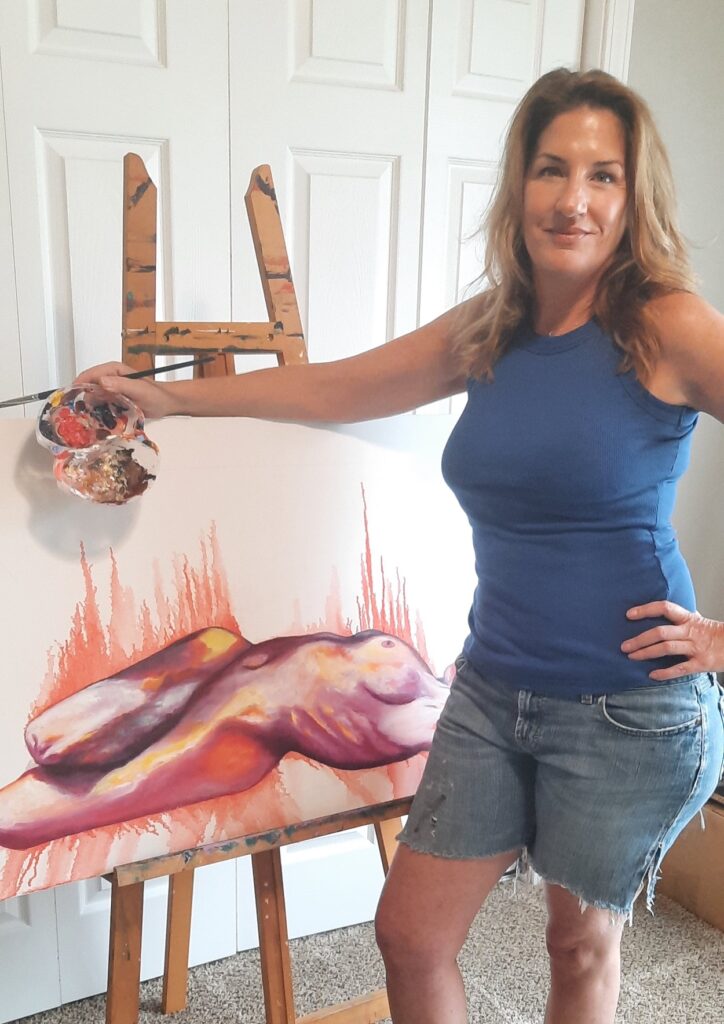
Zych creates big bold paintings that represent whatever is “locked inside my brain at the moment.” They’ve evolved as her life has and as she takes inspiration from things around her.
The Recovery Art Show will take a break next year as Zych reimagines it.
“I don’t know what it’s going to look like,” she said. “My experience is working with other people who are making art is what is going to shape the future of the show. I wanted to finish out this show and say I had a great run.”
Warren shares his art on Instagram and said the feedback from other artists and people with addictions is “better than any high that a substance can give you.”
“If you create art, you have a piece that is done in front of you, you’ve accomplished something, so the buzz is way better and way longer lasting.”
Zych and Warren both said they don’t create based on what will sell or please others but rather on what is inside of them that has to be shown in art form. It’s something Zych tells beginning artists, too, as she works with them.
She said people don’t know where to start – they’re afraid to put something out there on the canvas or in the artist’s statement. “We all think we sound stupid,” Zych said.
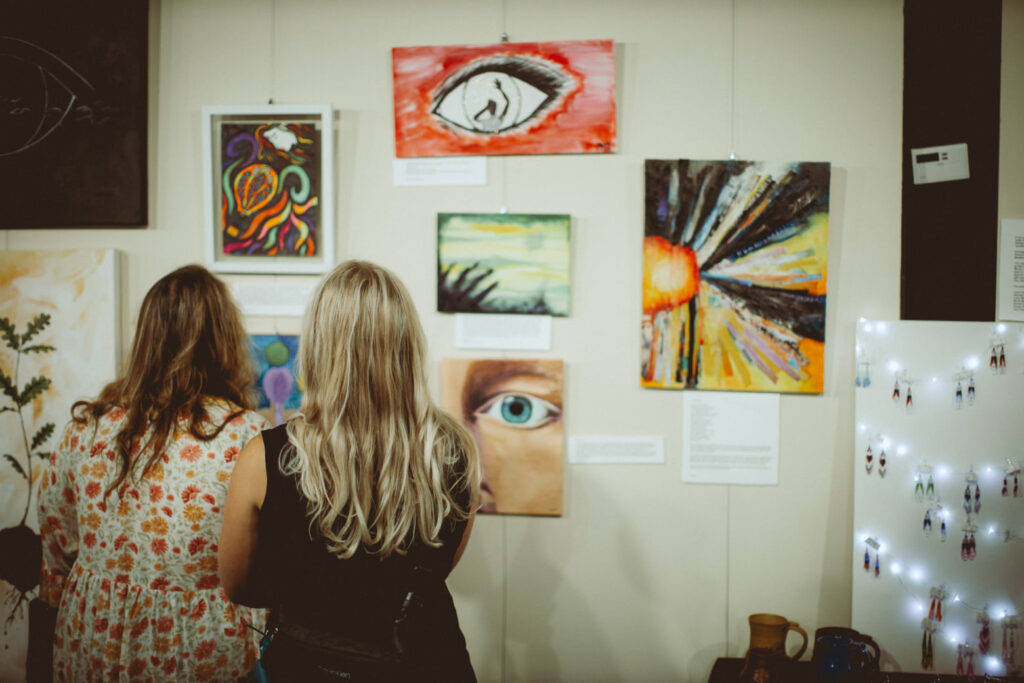
It’s difficult to be vulnerable – and creating and then sharing what’s inside of you can be terrifying. But Zych believes artists inside. And Warren knows talking to others who have been in similar situations eases some of the loneliness you can feel.
“You know there are other people out there going through the same thing, and it makes it easier,” he said.
And Zych said artists in the show are proud of themselves and their work, even if they were hesitant to start.
This is what she tells them: “If you’re going to deal with an emotion, start labeling it. Give it a color. That painting doesn’t have to make sense to anyone but you. When someone comes in to see it, they are writing their own storyline.”
Thinking of it that way is freeing – it doesn’t matter if what you’re trying to say falls flat – part of art is the creation of it, and part is the experience of the viewer. And since you can’t control that second part, just do it your own way when you create.
And then this happens.
Acceptance.
“People who come to the show, they want to love them (the artists),” Zych said. “They are the same as them. They have an experience in addiction or recovery and understand what it took to put the piece out there That’s community, and that is all we are doing is building community and making a connection.”
Maybe the connection is the story. Or the colors. The artist’s statement. The texture. The suggestion of blinking bar lights and the hand extended to the viewer.
Come here. Create. Connect.
Recover.
Tallgrass Recovery Art Show
When: 6 to 9 p.m. Aug. 26
Where: Post Pilgrim Gallery in the lower level of Last Stop CD Shop, 2121 E. 10th St.
Share This Story
Most Recent
Videos
Want to stay connected to where you live with more stories like this?
Adopt a free virtual “pigeon” to deliver news that will matter to you.
